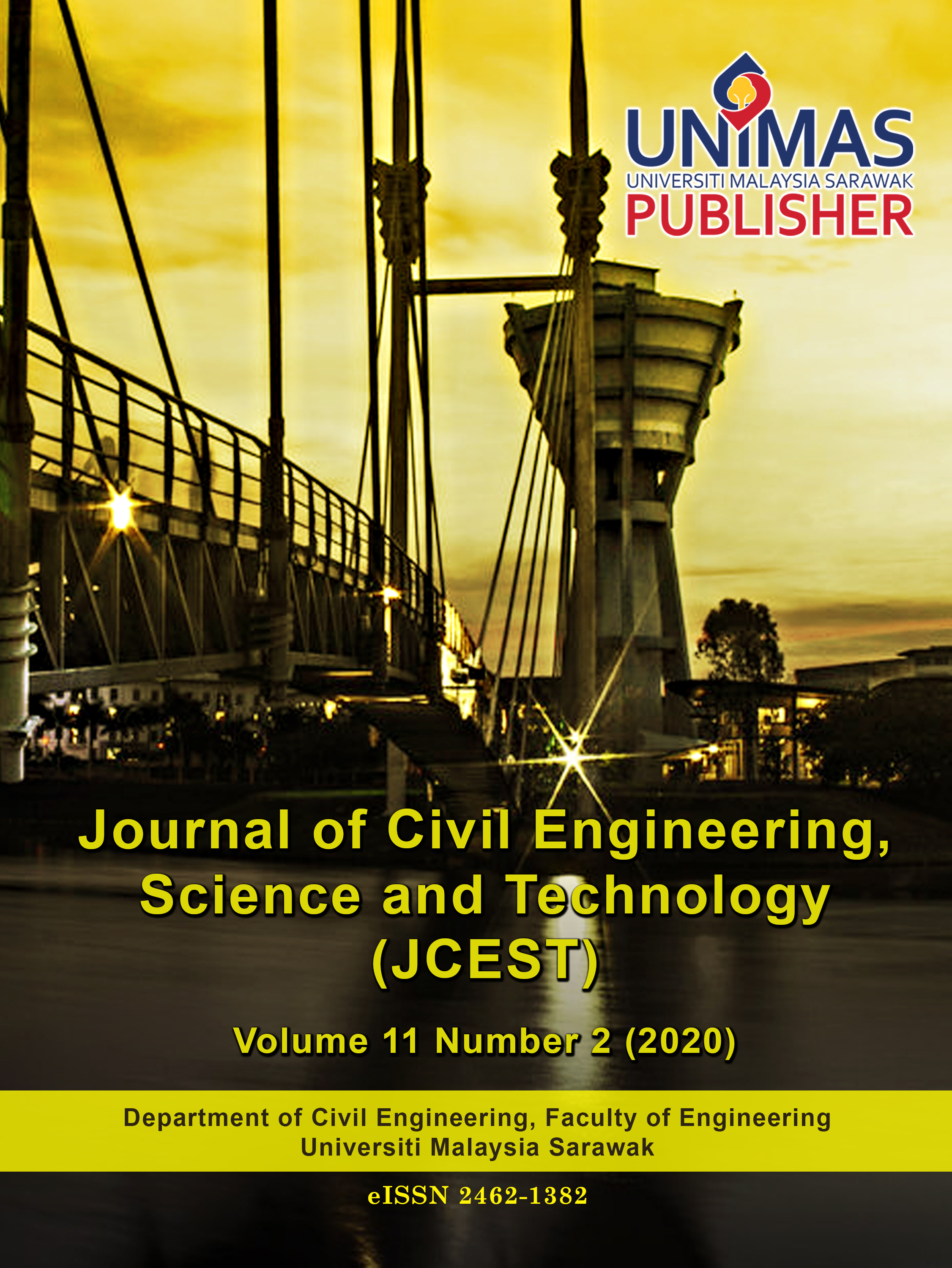DEVELOPMENT OF A COMPREHENSIVE PEDESTRIAN FOOTBRIDGE MANAGEMENT SYSTEM
DOI:
https://doi.org/10.33736/jcest.2619.2020Keywords:
Bridge management System, Pedestrian Footbridge, Bridges to prosperity, ranking and prioritizationAbstract
The footbridges in rural areas have been crucial as the only mean to overcome the rural isolation and allow breaking the cycle of poverty by providing access to such development facilities like education opportunities, markets, medical clinics and other basic services. In Rwanda, under collaboration with Engineers without Borders from German, and International Non-Government Organization Bridge to Prosperity (B2P, some footbridges are already built. In line with the agreement with B2P around 355 bridges are also planned in 5 years. The key challenge is to optimally allocate resources in order to maintain this number of bridges, especially under the current financial constraints. The purpose of this paper was to investigate and propose a pedestrian footbridge management system for Rwanda (PFBMS) which should allow the efficient bridge management, through the analysis of condition data, determination of the ranking and priority of bridge maintenance activities, as well as evaluation of the alternatives of preservation or replacement. The methodology comprises of the use of interview and discussions with district engineers in charge of bridge management, local community using the constructed footbridges as well as bridge builders from B2P. Microsoft Excel analysis tool has been used to developing the deterioration model, and therefore the PFBM was proposed. It is concluded that this system can accurately predict optimal maintenance planning as well as bridge rating.
References
A. L. Bang, "Cable Suspended Pedestrian Bridge Design For Rural Construction," Colorado, 2009.
w. B. t. Prosperity.org, "Government of Rwanda and B2P signed a Memorandum of Understanding to built 355 bridges in 5 years," Kigali, 2019.
Professor, Yamaguchi and S. B.Sc., Kyow, "Development and Practical Application of a Bridge Management System (J-BMS) in Japan," Japan, 2014.
D. s. C. Elsa, A. C. Alvaro and H. Wei-Hua, "Structural Health Monitoring of a Stress-Ribbon Footbridge," 2013.
B. J., H. R. , O. J. and V. and J. , "Diagnostics and evaluation of footbridges," 2012.
J. O. Joroslav and H. Richard, "Degradation of Steel Footbridges with neglected and Maintenance," Science Direct, Slovakia , 2016.
B. t. Prosperity, ""Inspection Philosophies and Methods" In Builder Manual," Colorado-Denver, 2016.
V. D. o. Transportation, "State of Good Repair (SGR) Program Bridge Prioritization Formula," 2018.
D. M. Ahmed, "Correlation and Regression Analysis Tex Book," Ankara-Turkey, 2015.
M. E. Dr. Read and D. T. Paul, "Implementation of a Bridge Management System In The Province of Nova Scotia," Innovation in Bridge Engineering Session of the 2004 Annual Conference of the Transportation Association of Canada , Quebec, 2004.
K. Kawamura, A. Miyamot, D. Frangopol and R. Kimura, ""Performance evaluation of concrete slabs of existing bridges," Engineering Structures, Elsevier Science Direct, 2003.
Downloads
Published
How to Cite
Issue
Section
License
Upon acceptance of an article, the corresponding author on behalf of all authors will be asked to complete and upload the Copyright Transfer Form (refer to Copyright Issues for more information on this) alongside the electronic proof file.
Copyright Transfer Statement for Journal
1) In signing this statement, the author(s) grant UNIMAS Publisher an exclusive license to publish their original research papers. The author(s) also grant UNIMAS Publisher permission to reproduce, recreate, translate, extract or summarize, and to distribute and display in any forms, formats, and media. The author(s) can reuse their papers in their future printed work without first requiring permission from UNIMAS Publisher, provided that the author(s) acknowledge and refer the publication in the Journal.
2) For open-access articles, the author(s) agree that their articles published under UNIMAS Publisher are distributed under the terms of the Creative Commons Attribution-NonCommercial-ShareAlike 4.0 International License (CC BY-NC-SA 4.0) which permits unrestricted use, distribution, and reproduction in any medium, for non-commercial purposes, provided the original work of the author(s) is properly cited.
3) For subscription articles, the author(s) agree that UNIMAS Publisher holds the copyright or an exclusive license to publish. Readers or users may view, download, print, and copy the content, for academic purposes, subject to the following conditions of use: (a) any reuse of materials is subjected to permission from UNIMAS Publisher; (b) archived materials may only be used for academic research; (c) archived materials may not be used for commercial purposes, which include but not limited to monetary compensation by means of sale, resale, license, transfer of copyright, loan, etc.; and (d) archived materials may not be re-published in any part, either in print or online.
4) The author(s) are responsible to ensure their submitted work is original and does not infringe any existing copyright, trademark, patent, statutory right, or propriety right of others. The corresponding author has obtained permission from all co-authors prior to submission to the journal. Upon submission of the manuscript, the author(s) agree that no similar work has been or will be submitted or published elsewhere in any language. If the submitted manuscript includes materials from others, the authors have obtained permission from the copyright owners.
5) In signing this statement, the author(s) declare that the researches which they have conducted comply with the current laws of the respective country and UNIMAS Journal Publication Ethics Policy. Any experimentation or research involving humans or the use of animal samples must obtain approval from the Human or Animal Ethics Committee in their respective institutions. The author(s) agree and understand that UNIMAS Publisher is not responsible for any compensational claims or failure caused by the author(s) in fulfilling the above-mentioned requirements. The author(s) must accept the responsibility for releasing their materials upon request by Chief Editor or UNIMAS Publisher.
6) The author(s) should have participated sufficiently in the work and ensured the appropriateness of the content of the article. The author(s) should also agree that they have no commercial attachments (e.g. patent or license arrangement, equity interest, consultancies, etc.) that might pose any conflict of interest with the submitted manuscript. The author(s) also agree to make any relevant materials and data available upon request by the editor(s) or UNIMAS Publisher.

